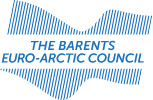The Barents Environmental Hot Spot List from 2003 consists of 42 hot spots, representing various sectors, such as pulp and paper, mining and metallurgy, heat and power, water and wastewater, along with other polluted sites. It was initially defined in the report of the Nordic Environment Finance Corporation (Nefco) in collaboration with the Arctic Monitoring and Assessment Programme (AMAP). In 2005, Environment Ministers of the four Barents countries - Finland, Norway, Russia and Sweden - defined the mutual goal on launching investment projects in all of the 42 Barents Environmental Hot Spots, aiming for their elimination. Later on in 2010, a special exclusion procedure of the Environmental Hot Spots was presented to the Ministers of Environment. The temporary Subgroup on Hot Spots Exclusion was established under the BEAC Working Group on Environment to facilitate the process.
Since 2010, many joint projects have been implemented to tackle environmental challenges at the hot spots. Investments come from internal financial resources of the hot spots' owners and different funding mechanisms - such as Barents Hot Spot Facility (BHSF), Nordic Environment Finance Corporation (Nefco), Northern Dimension Environmental Partnership (NDEP) and others. These projects improve water supply and sewage systems of towns and villages, enhance waste management, promote energy saving and reduce airborne emissions. Cooperation enables to achieve significant environmental improvements at many of the hot spots and lead to exclusion of hot spots from the Barents list. To date, 12 full hot spots and 3 partial ones have been eliminated, and the work on environmental progress at other sites is being continued (27 full hot spots and 3 partial ones remain on the list).







